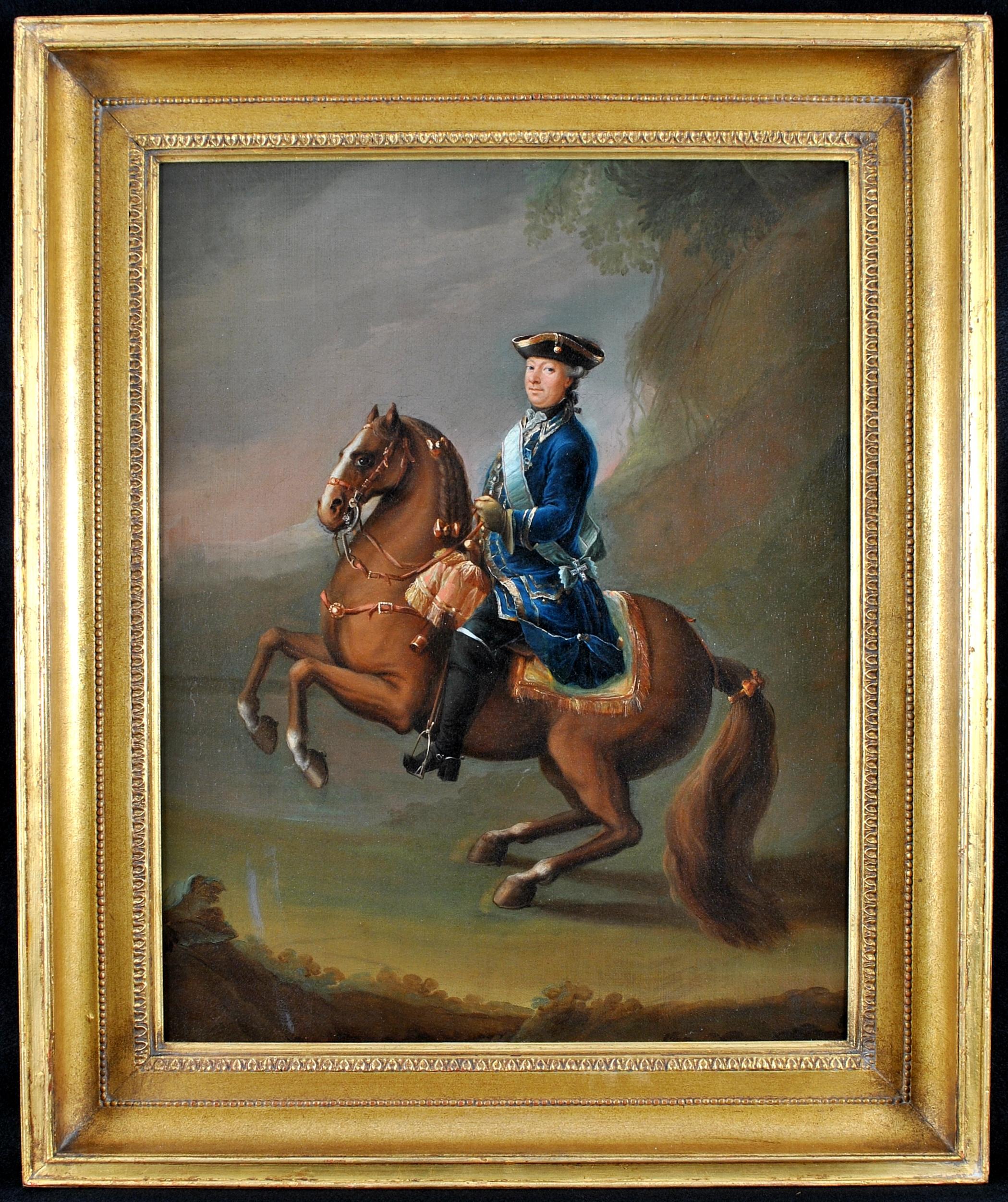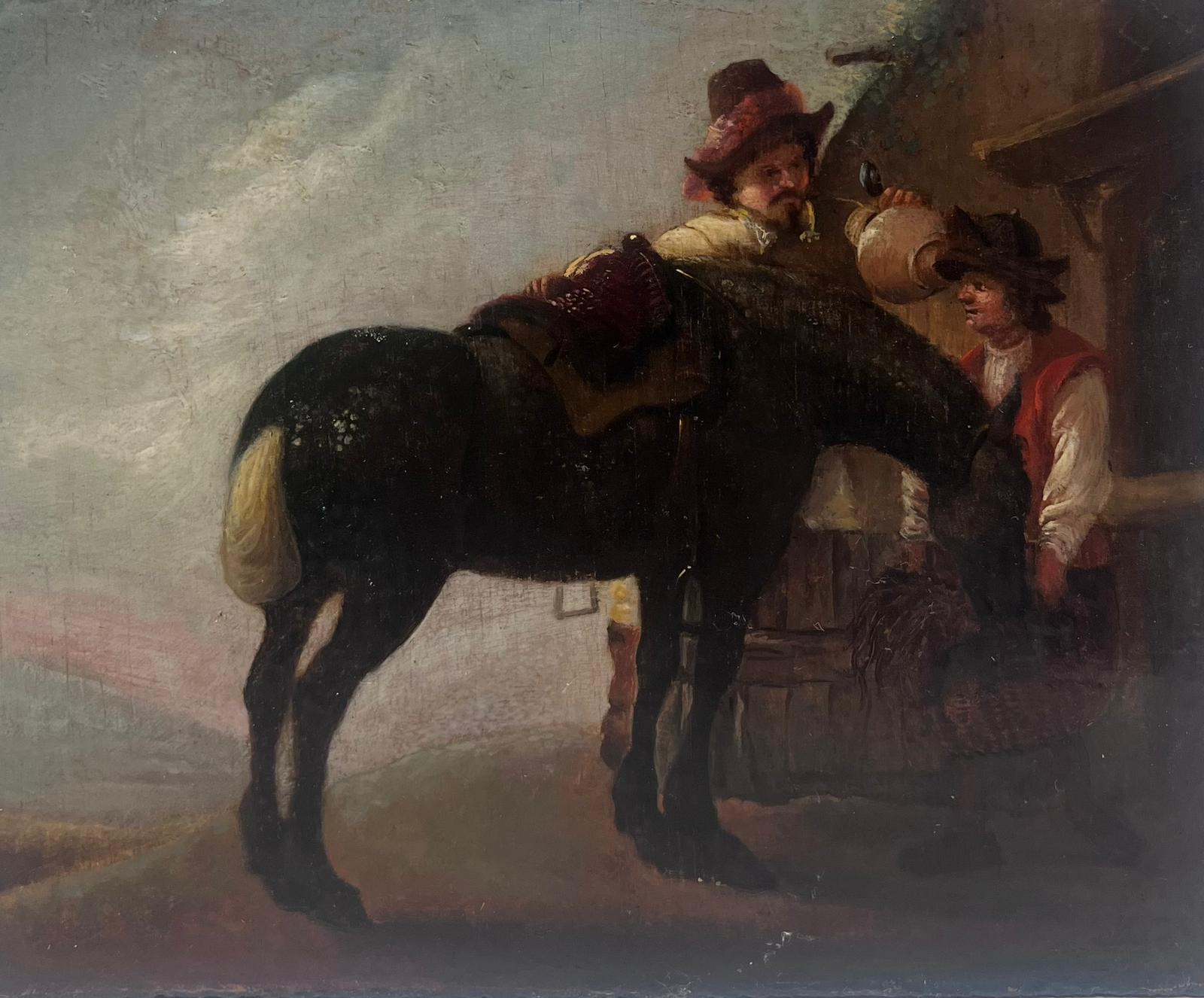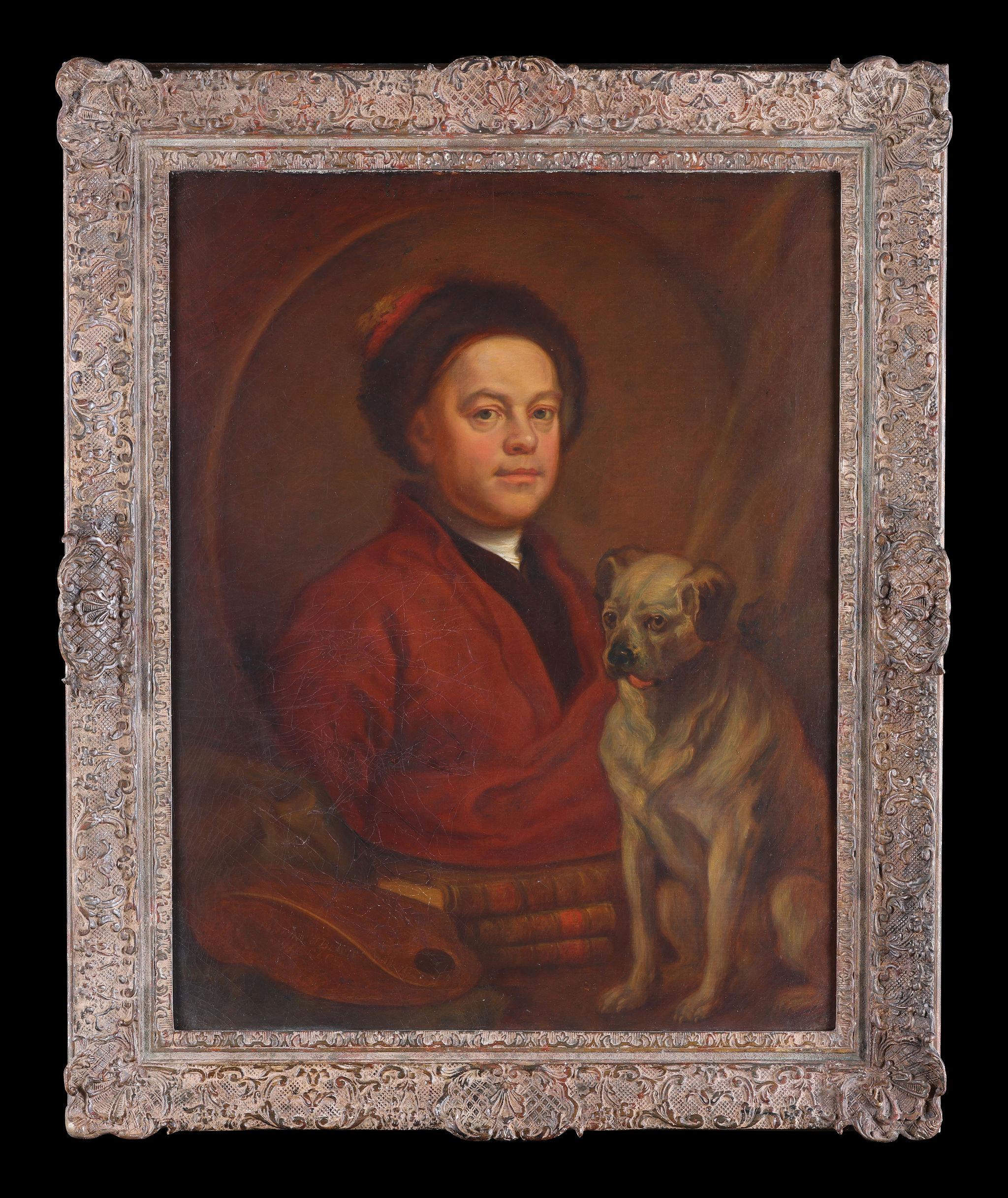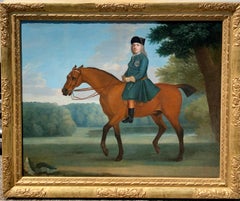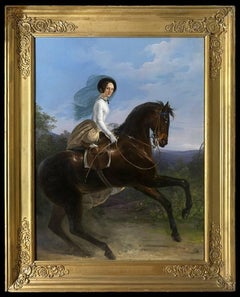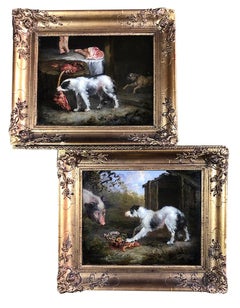
A Pair of 19th Century Animals Paintings, Oil Paint on Canvas, Old Master, Ward
1 of 13
James WardA Pair of 19th Century Animals Paintings, Oil Paint on Canvas, Old Master, Ward1800
1800
About the Item
- Creator:James Ward (1769 - 1859, English)
- Creation Year:1800
- Dimensions:Height: 20 in (50.8 cm)Width: 17 in (43.18 cm)Depth: 3 in (7.62 cm)
- Medium:
- Movement & Style:
- Period:
- Condition:
- Gallery Location:London/Yorkshire, GB
- Reference Number:Seller: PP000751stDibs: LU58934268392
You May Also Like
- 18th century English portrait of the Duke of Newcastle upon his horse inBy Thomas SpencerLocated in Woodbury, CTThomas Spencer was a leading sporting and equestrian artist of the period of John Wootton and James Seymour; his art shows a considerable to debt to tha...Category
1760s Old Masters Portrait Paintings
MaterialsCanvas, Oil
$54,800 Sale Price20% OffFree Shipping - C19th Portrait Princesse de Joinville of Brazil - Spectacular fit for a palaceBy Henri d'Ainecy MontpezatLocated in London, GBPortrait of Princess de Joinville riding a Bay Horse Henri d’Aincy, Le Comte Monpezat (French 1817-1859) Painted circa 1837-9 oil on canvas 113 x 92 inches (including frame) 92 x 70 inches (unframed) Provenance – from a private royal collection This magnificent portrait depicts Princess de Joinville, the daughter of Pedro I, Emperor of Brazil and the King of Portugal. Through her illustrious family she was directly related Alexander III and Nicholas II of Russia and the Russian royal family, as well as to many of the great ruling families of Europe. The work clearly confirms Monpezat as one of the most accomplished equestrian portrait painters in France in the early nineteenth century. In terms of scale, quality and dramatic power, it must surely be considered amongst his finest works. The stance of the powerful thoroughbred - in half rear - emphasises the calm nature and courage of the Princess. Francisca of Brazil (1824-98) married a son of Louis Philippe I, the King of the French, and had three children. Born at the Imperial Palace of Saint Christopher, her youngest brother was the future Pedro II...Category
1830s Old Masters Portrait Paintings
MaterialsOil
- Portrait of William Stonestreet - Dutch Golden Age 17thC art oil paintingLocated in London, GBThis superb Dutch Golden Age portrait is attributed to circle of Dutch artist Wybrand Simonsz de Geest. Painted in 1666 it is a full length portrait of a young William Stonestreet. H...Category
1660s Old Masters Portrait Paintings
MaterialsOil
$24,420 Sale Price20% Off - The Infant St John the Baptist with Lamb - Italian Old Master art oil paintingLocated in London, GBThis beautiful 18th century Italian Old Master oil painting is something rather special. Painted circa 1750 the subject matter is Saint John the Baptist as a very young child. He is ...Category
1750s Old Masters Portrait Paintings
MaterialsOil
$9,157 Sale Price20% Off - Boy with Guinea Pig - British Victorian animal art male portrait oil paintingBy Henry Turner MunnsLocated in London, GBThis charming British Victorian genre oil painting is by noted exhibited artist Henry Tuner Munns. It was painted in 1865 in realist palette with superb detail in the young boy's fac...Category
19th Century Old Masters Portrait Paintings
MaterialsOil
- Portrait of a Boy with Bird - British 17th century art Old Master oil paintingLocated in London, GBThis stunning 17th century Old Master portrait oil painting is attributed to Godfrey Kneller. Painted circa 1680 it is a superb full length portrait of a blonde haired boy holding a struggling bird. He is bare foot and dressed in a white shirt with gold shawl around him. In the background is a blue drape. There is lovely detail and brushwork in his facial features and vibrant colouring. This a superb 17th century Old Master oil painting housed in a lovely frame. Provenance. Two ascribed labels verso Christie's stamp verso. . Condition. Oil on canvas in good condition, 36 inches by 28 inches approx. Frame. Housed in an ornate frame, 43 inches by 35 inches approx. Sir Godfrey Kneller, 1st Baronet (born Gottfried Kniller; 8 August 1646 – 19 October 1723), was the leading portrait painter in England during the late 17th and early 18th centuries, and was court painter to English and British monarchs from Charles II to George I. Kneller was born Gottfried Kniller in the Free City of Lübeck, the son of Zacharias Kniller, a portrait painter. Kneller studied in Leiden, but became a pupil of Ferdinand Bol and Rembrandt Harmenszoon van Rijn in Amsterdam. He then travelled with his brother John Zacharias Kneller, who was an ornamental painter, to Rome and Venice in the early 1670s, painting historical subjects and portraits in the studio of Carlo Maratti, and later moved to Hamburg. The brothers came to England in 1676, and won the patronage of the Duke of Monmouth. He was introduced to, and painted a portrait of, Charles II. In England, Kneller concentrated almost entirely on portraiture. In the spirit of enterprise, he founded a studio which churned out portraits on an almost industrial scale, relying on a brief sketch of the face with details added to a formulaic model, aided by the fashion for gentlemen to wear full wigs. His portraits set a pattern that was followed until William Hogarth and Joshua Reynolds. Nevertheless, he established himself as a leading portrait artist in England. When Sir Peter Lely died in 1680, Kneller was appointed Principal Painter in Ordinary to the Crown by Charles II. For about 20 years (c.1682-1702) he lived at No. 16-17 The Great Piazza, Covent Garden. In the 1690s, Kneller painted the Hampton Court Beauties depicting the most glamorous ladies-in-waiting of the Royal Court for which he received his knighthood from William III. He produced a series of "Kit-cat" portraits of 48 leading politicians and men of letters, members of the Kit-Cat Club. Created a baronet by King George I on 24 May 1715, he was also head of the Kneller Academy of Painting and Drawing 1711–1716 in Great Queen Street, London, which counted such artists as Thomas Gibson amongst its founding directors. His paintings were praised by Whig members including John Dryden, Joseph Addison, Richard Steele, and Alexander Pope. On the landing in Horsham Museum hang works of art from the Museum's extensive painting collection, featuring a large 18th-century portrait of Charles Eversfield and his wife, of Denne Park House. In the painting Eversfield is giving his wife some violets which signifies fidelity, love and honesty. It is likely that the picture was cut down at some time as it was unusual to stop just below the knee. It may have been painted by more than one person: someone who specialised in clothing, another in drapes, and so on, with perhaps Kneller painting the heads, for it was the portraits that gave the sitters their identity, everything else is rather formulaic. He married a widow, Susanna Grave, on 23 January 1704 at St Bride...Category
1680s Old Masters Portrait Paintings
MaterialsOil









